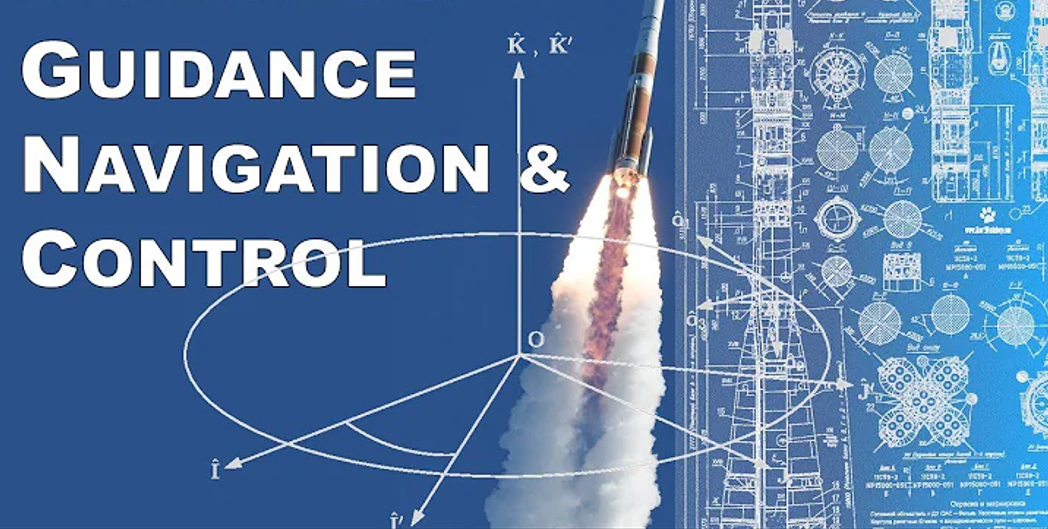Navigation and guidance systems are critical components of space exploration, enabling spacecraft to accurately travel to their intended destinations, perform mission-specific tasks, and return safely (in the case of crewed missions or sample-return missions). These systems ensure precise trajectory control, autonomous decision-making, and effective interaction with ground control teams.
1. Roles of Navigation and Guidance Systems
a. Determining Position and Velocity
- Purpose:
- Accurately determine a spacecraft’s location and speed relative to celestial bodies or mission objectives.
- Applications:
- Maintain spacecraft within its planned trajectory or orbit.
- Ensure correct positioning for scientific observations or communications.
b. Trajectory Planning and Adjustment
- Purpose:
- Plot the optimal path from launch to destination and make mid-course corrections.
- Applications:
- Interplanetary missions like Mars rovers or asteroid probes require precise trajectory adjustments to account for gravitational influences and orbital dynamics.
c. Orbital Insertion and Maintenance
- Purpose:
- Place spacecraft into stable orbits around planets, moons, or other celestial bodies.
- Applications:
- Satellites and space probes rely on navigation systems for accurate orbital insertion and station-keeping.
d. Rendezvous and Docking
- Purpose:
- Safely approach and connect with other spacecraft or stations.
- Applications:
- Crewed spacecraft like SpaceX Dragon or Soyuz use navigation systems for docking with the International Space Station (ISS).
e. Surface Navigation
- Purpose:
- Guide landers and rovers during descent and surface exploration.
- Applications:
- Mars rovers like Perseverance navigate terrain using onboard guidance systems and GPS-like data relayed from orbiters.
2. Key Components of Navigation and Guidance Systems
a. Sensors
- Measure the spacecraft’s position, velocity, orientation, and surrounding environment.
- Star Trackers:
- Identify constellations to determine spacecraft orientation.
- Example: Used in interplanetary missions for attitude control.
- Inertial Measurement Units (IMUs):
- Measure acceleration and angular velocity.
- Example: Essential for short-term navigation when external references are unavailable.
- Sun Sensors:
- Detect the Sun’s position to aid orientation.
- Earth Sensors:
- Track the Earth’s horizon for low Earth orbit (LEO) spacecraft.
- LIDAR and Cameras:
- Provide data for surface navigation and proximity operations.
- Altimeters and Doppler Radars:
- Measure altitude and velocity during landing or flybys.
b. Guidance Algorithms
- Process sensor data to calculate the optimal path and maneuvering commands.
- Trajectory Calculation:
- Uses numerical models to plan and adjust paths based on gravitational forces, planetary motions, and other dynamics.
- Autonomous Navigation:
- Onboard systems calculate adjustments without real-time input from ground control.
- Example: NASA’s Deep Space 1 used autonomous navigation for asteroid and comet flybys.
c. Actuation Systems
- Execute adjustments based on guidance system outputs.
- Reaction Control Systems (RCS):
- Small thrusters used for precise orientation adjustments.
- Main Propulsion Systems:
- Provide significant thrust for major trajectory changes.
- Reaction Wheels and Gyroscopes:
- Maintain or change spacecraft orientation without expelling propellant.
d. Communication Systems
- Relay navigation data between spacecraft and ground control.
- Radio Frequency (RF) Communication:
- Used for telemetry and command exchange.
- Example: Tracking spacecraft positions with Doppler shift measurements.
- Optical Communication:
- Provides high-precision data for deep-space missions.
3. Techniques Used in Space Navigation
a. Ground-Based Navigation
- Description:
- Ground stations track spacecraft using radar, laser ranging, and Doppler shifts.
- Examples:
- NASA’s Deep Space Network (DSN) and ESA’s Estrack provide high-precision tracking and trajectory updates.
- Applications:
- Critical for interplanetary missions where onboard navigation is supplemented by ground-based data.
b. Celestial Navigation
- Description:
- Uses positions of stars, planets, and other celestial objects as references.
- Examples:
- Star trackers determine orientation based on known star maps.
c. Gravity Assist (Slingshot Maneuver)
- Description:
- Uses a planet or moon’s gravitational field to alter a spacecraft’s speed and direction without consuming fuel.
- Examples:
- Voyager probes used multiple gravity assists to explore the outer planets.
d. Optical Navigation
- Description:
- Uses cameras and LIDAR to determine distance and position relative to a target.
- Examples:
- ESA’s Rosetta mission used optical navigation to approach and orbit comet 67P/Churyumov-Gerasimenko.
e. Autonomous Navigation (AutoNav)
- Description:
- Onboard systems compute navigation adjustments without Earth-based input.
- Examples:
- NASA’s Mars rovers use AutoNav to traverse the Martian surface safely.
4. Challenges in Space Navigation and Guidance
a. Signal Delay
- Issue:
- Signals take significant time to travel over interplanetary distances (e.g., ~13 minutes one-way for Mars).
- Solution:
- Autonomous systems handle time-sensitive operations.
b. Limited Accuracy in Deep Space
- Issue:
- Small errors in trajectory can grow significantly over long distances.
- Solution:
- Frequent course corrections based on updated position and velocity data.
c. Fuel Constraints
- Issue:
- Maneuvers require propellant, which is limited in supply.
- Solution:
- Optimize trajectories with gravity assists and precise planning.
d. Dynamic Environments
- Issue:
- Unknown or changing conditions (e.g., atmospheric density on re-entry or terrain variations on planetary surfaces).
- Solution:
- Adaptive algorithms and onboard sensors enable real-time adjustments.
5. Applications of Navigation and Guidance Systems
a. Interplanetary Missions
- Navigate vast distances to reach planets, moons, or asteroids.
- Example: NASA’s New Horizons reached Pluto with pinpoint accuracy.
b. Orbital Operations
- Maintain orbits for satellites and space stations.
- Example: Navigation systems on the International Space Station (ISS) ensure it stays in stable orbit.
c. Landing Systems
- Guide landers to safe touchdown zones on planetary surfaces.
- Example: NASA’s Curiosity and Perseverance rovers used advanced entry, descent, and landing (EDL) systems.
d. Crewed Spaceflight
- Ensure safety during ascent, orbital insertion, rendezvous, and re-entry.
- Example: Apollo’s navigation systems enabled precise lunar landings.
6. Future Developments in Navigation and Guidance
a. Space-Based GPS
- Description:
- Expanding GPS-like systems to cover cislunar space and beyond.
- Applications:
- Lunar exploration and navigation for deep-space missions.
b. AI-Driven Navigation
- Description:
- Machine learning algorithms analyze complex scenarios and optimize navigation autonomously.
- Applications:
- Mars rover missions and asteroid exploration.
c. Quantum Navigation
- Description:
- Quantum sensors provide ultra-precise measurements of position and acceleration.
- Applications:
- Deep-space exploration and long-term missions.
d. Interplanetary Communication Networks
- Description:
- Reliable communication and navigation infrastructure for interplanetary operations.
- Applications:
- Mars colonies and asteroid mining missions.
Conclusion
Navigation and guidance systems are vital to the success of space exploration, ensuring spacecraft reach their destinations with precision and efficiency. From interplanetary missions to surface exploration and orbital maintenance, these systems combine advanced technologies and algorithms to overcome the challenges of space travel. Future advancements, including AI and quantum-based technologies, promise even greater capabilities for exploration beyond our solar system.
Hashtags
#SpaceNavigation #GuidanceSystems #SpacecraftNavigation #AerospaceGuidance #ExplorationNavigation #DeepSpaceNavigation #LunarNavigation #MarsMissionGuidance #InterplanetaryTravelTech #AsteroidExplorationNavigation #NextGenNavigation #AdvancedGuidanceTech #SmartSpaceNavigation #AIInSpaceNavigation #AutonomousGuidanceSystems













